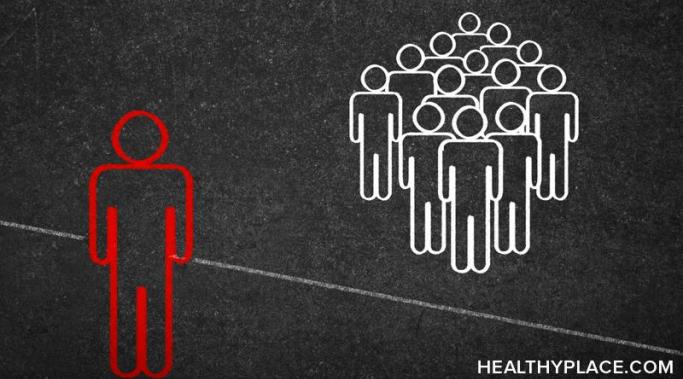I've been taking a ballet class to help with my schizoaffective disorder, but still, schizoaffective anxiety almost made me leave. Exercise helps with mental health--plus, it's fun and I enjoyed ballet all through my childhood. But in my most recent class, I had a schizoaffective anxiety episode. Here's what happened.
Creative Schizophrenia
The stigma against schizophrenia caused me to be dishonest. When I transferred from the Rhode Island School of Design (RISD) to The School of the Art Institute of Chicago (SAIC), everyone wanted to know why. This puzzled me because it was obvious that SAIC is a top art school by global standards. Still, I wouldn’t have transferred if I hadn’t had a schizoaffective psychotic episode, but I couldn’t tell people that because of the stigma against schizophrenia.
I suffer from schizoaffective suicidal ideation. I’ve never made an attempt on my life, and I’ve never had a plan to end my life. But I think about doing so. I think about it a lot. I think about it so much that I’ve gone to the emergency room multiple times, and have even been hospitalized for schizoaffective suicidal ideation.
Having a regular sleep cycle is important, but for years after I was first diagnosed with schizophrenia and then schizoaffective disorder, my sleep cycle became completely reversed. I was up all night and asleep all day. It wasn't until a little over four years ago--just before I started writing for HealthyPlace--that I got a regular sleep cycle back in place so that I'm awake during the day and asleep at night. What a relief. Here's how I did it.
I lost 20 pounds while on a medication for schizoaffective disorder that is infamous for causing weight gain. Here's how I did it.
Meeting new people can be difficult. My schizoaffective disorder makes it hard for me to strike up conversations with strangers, let alone make new friends. But recently on vacation, I met a young woman who I knew could be a good friend if she didn't live so far away. For the sake of her privacy, I'll call her Gina (not her real name).
Dealing with schizoaffective anxiety is important to me because anxiety has taken so much away from me. I'm afraid to do so many simple things, like driving in the rain or washing my hair. There are other things I can't do because I have anxiety--I used to be a voracious reader but now I'm so restless I can't get lost in a good book anymore. However, my husband Tom and I have come up with a strategy based on my cognitive behavioral therapy (CBT) homework that I'm hoping will help in dealing with schizoaffective anxiety, and maybe it can help you, too.
My psychotic break happened years ago, but I still feel that what I believed was real, even though I know it wasn't. Likewise, my schizoaffective disorder doesn't feel like an illness. It feels like something that happened to me. My initial psychotic break doesn't feel like the onset of an illness. It feels like it was an event. Maybe it's because the things my mind told me were happening--that famous people were stalking me--seemed so very real.
Schizoaffective disorder and marriage can go together, successfully. My husband Tom and I will celebrate our 10th anniversary in September. That's no small feat, especially when you add schizoaffective disorder into the equation. I think our best secret is patience. Here's how patience helps our marriage stay happy, even though I have schizoaffective disorder.
Listening to music really helps with my schizoaffective disorder. I try to listen to soothing music, like Tori Amos' more recent work or pretty much anything by Hope Sandoval. A lot of people have suggested I listen to "happy" music. The trouble is, I don't like a lot of happy music because it tends to be in the pop genre, although there are exceptions. Here's how music helps with my schizoaffective disorder.









